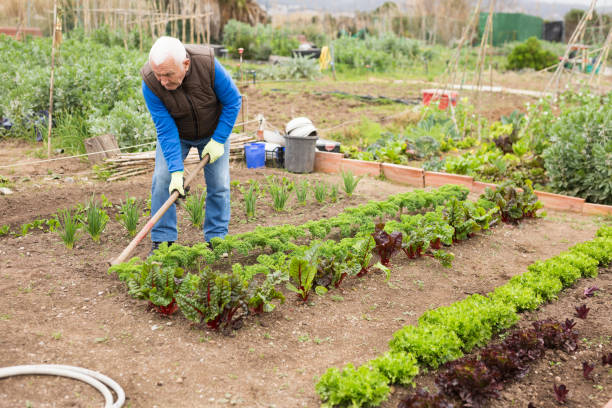Community gardens have become increasingly popular as spaces where individuals come together to grow food, flowers, and other plants. These shared gardens, often located in urban or suburban settings, provide numerous benefits that go beyond fresh produce and beautiful flowers. They foster a sense of community, promote sustainable living, enhance local biodiversity, and provide educational opportunities for both children and adults. In this article, we’ll explore the many advantages of community gardens, how they operate, and how they can transform neighborhoods.



1. What is a Community Garden?
A community garden is a shared piece of land where people come together to grow fruits, vegetables, flowers, and herbs. They can be organized in various ways, from plots assigned to individual gardeners to collaborative spaces where everyone works together. These gardens can be found in urban, suburban, or rural areas, and they are often located on public lands, such as parks or unused city lots, but can also be hosted by schools, churches, or other organizations.
Each garden operates under its own set of rules, but they typically involve collective management, meaning everyone shares the responsibilities and the rewards. Some community gardens may require a membership fee or volunteer hours, while others are free and open to all.
2. Benefits of Community Gardens
The advantages of community gardens extend beyond just growing plants. They have wide-ranging positive effects on individuals, communities, and the environment.
a. Access to Fresh, Nutritious Food
One of the primary benefits of community gardens is that they provide participants with access to fresh, homegrown fruits and vegetables. In urban areas, where fresh produce may be harder to come by, community gardens play a critical role in combating food deserts. Growing your food ensures that it’s fresh, and free from pesticides, and can help families save money on groceries.
- Combating Food Insecurity: Many common
- Healthier Eating Habits: Gar
b. Building Community and Social Connections
Community garden
- Social Inclusion: Gardens of
- Shared Responsibility: B
- Combating Loneliness: In today’s fast-paced world, many people feel disconnected from their communities. Community gardens offer a sense of belonging and connection that can help reduce feelings of isolation, particularly among the elderly or those living alone.
c. Promoting Sustainability and Environmental Awareness
Community gardens are sustainable by nature. They encourage organic growing practices, reduce the environmental impact of food transportation, and provide green spaces in areas that may otherwise lack vegetation.
- Reducing Carbon Footprint: By growing food locally, community gardens reduce the need for long-distance transportation of produce, lowering greenhouse gas emissions. Many gardens also practice composting and rainwater harvesting, further reducing their environmental impact.
- Enhancing Local Biodiversity: Gardens attract pollinators such as bees, butterflies, and birds, which are essential for maintaining local ecosystems. Additionally, community gardens often grow a wide variety of plants, which helps increase biodiversity in urban areas.
- Conservation of Resources: Many community gardens employ eco-friendly techniques such as organic gardening, water conservation, and using natural pest control methods. This reduces the reliance on chemical fertilizers, pesticides, and excessive water use, promoting more sustainable living practices.
d. Educational Opportunities
Community gardens serve as outdoor classrooms, offering hands-on learning experiences for people of all ages. They provide an ideal environment for teaching children and adults about gardening, nutrition, environmental stewardship, and sustainability.
- Teaching Kids About Food: Gardens offer children the opportunity to learn where their food comes from and how it’s grown. This hands-on experience can inspire them to eat more fruits and vegetables and instill lifelong healthy eating habits.
- Lifelong Learning: Adults can also benefit from the educational opportunities offered by community gardens. Many gardens host workshops on topics like composting, organic gardening, or sustainable living. Gardening also provides a chance for people to share their knowledge and learn new skills from others in the community.
- School Partnerships: Many community gardens partner with local schools, offering students the chance to engage in gardening as part of their science or environmental studies curriculum. This hands-on learning can spark an interest in agriculture, biology, or environmental science.
e. Mental and Physical Health Benefits
Gardening has numerous health benefits, both physical and mental. It’s a great form of low-impact exercise, helping people stay active without putting too much strain on the body. The act of gardening can also reduce stress and improve mental well-being.
- Physical Activity: Gardening involves a variety of physical activities such as digging, planting, weeding, and watering. These tasks help improve strength, flexibility, and endurance while providing a low-impact form of exercise that is accessible to people of all ages and fitness levels.
- Stress Relief: Spending time in nature has been shown to reduce stress and anxiety. The peaceful environment of a garden, combined with the repetitive motions of planting and tending to plants, can have a calming effect on the mind.
- Improved Mental Health: Gardening can be therapeutic, offering a sense of purpose and accomplishment. For people dealing with depression, anxiety, or other mental health challenges, working in a garden provides a way to focus on something positive and productive.
3. How to Start a Community Garden
Starting a community garden involves planning, organization, and community involvement. Here’s a step-by-step guide to help you get started:
a. Gather Community Interest
The first step is to gauge interest within your community. Organize a meeting to discuss the idea and see if others are willing to participate. Having a group of dedicated individuals is crucial to the success of the garden.
- Form a Committee: Create a group of people who are committed to managing the garden. This committee will be responsible for organizing volunteers, securing funding, and maintaining the garden over time.
- Survey the Community: Survey to determine what the community would like to see in the garden. Do they want to grow vegetables, flowers, or herbs? Are there any specific needs, such as raised beds for people with disabilities?
b. Find a Location
once you have community support, the next step is to find a suitable location for the garden. Look for an area that gets plenty of sunlight and has access to water. The site should be easily accessible to community members and safe for gardening activities.
- Public vs. Private Land: many community gardens are located on public land, such as parks or school grounds. However, some are also established on private land with permission from the property owner. Make sure to obtain the necessary permits and agreements before breaking ground.
- Soil Quality: Conduct a soil test to ensure the land is suitable for growing plants. If the soil is poor, you may need to bring in topsoil or raised beds.
c. Secure Funding and Resources
Starting a community garden often requires funding for tools, seeds, soil, and other supplies. Look for grants, donations, or fundraising opportunities to help cover these costs.
- Grants and Sponsorships: Many local governments and non-profit organizations offer grants or sponsorships for community gardens. Reach out to businesses or organizations That might be, willing to support the project.
- Donations: ask for donations of seeds, plants, tools, or other gardening supplies from local garden centers or hardware stores. Community members may also have extra tools or materials to contribute.
d. Design and Organize the Garden
Once you’ve secured a location and resources, it’s time to design the garden. Work with the community to create a layout that meets everyone’s needs.
- Plot Assignments: Decide whether the garden will have individual plots for families or if it will be a communal space where everyone works together. Mark plots and create a system for assigning them to participants.
- Garden Infrastructure: Plan for walkways, raised beds (if needed), composting areas, and storage for tools. Consider installing rain barrels for water conservation and fences to keep out animals.
e. Set Rules and Guidelines
to ensure the garden operates smoothly, it’s important to establish rules and guidelines for participants. These might include expectations for maintenance, harvest distribution, and volunteer hours.
- Maintenance Schedule: Create a schedule for garden maintenance, such as watering, weeding, and harvesting. This ensures that the work is shared evenly among participants.
- Garden Etiquette: Set clear rules about how tools should be shared, how plots are managed, and what happens if someone Is unable To tend their plot for an extended period.
4. Challenges and Solutions in Community Gardens
While community gardens offer many benefits, they also come with challenges. Common issues include coordinating volunteers, dealing with pests or theft, and ensuring long-term sustainability. However, with proper planning and organization, these challenges can be overcome.
- Volunteer Management: Keep volunteers engaged by offering workshops, social events, and







